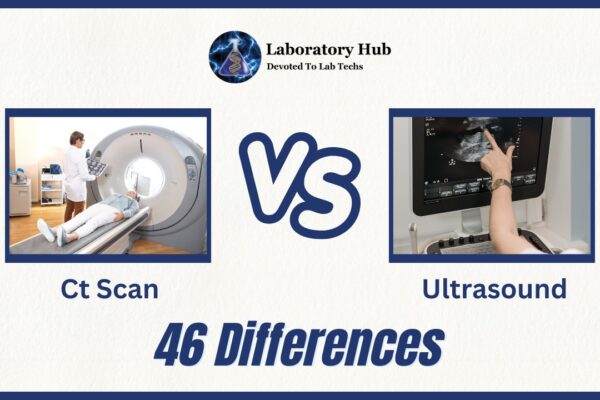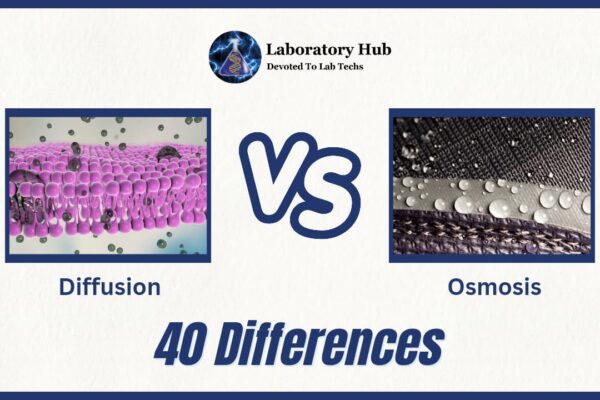45 Differences Between Lymphoma and Leukemia
Lymphoma and leukemia are both malignancies that begin in the body’s blood-forming tissues, specifically the bone marrow and lymphatic system. While each of them entails aberrant white blood cell development, they have different features and categories.
LYMPHOMA
Lymphoma is a kind of cancer that begins in the lymphatic system, which is part of the immune system of the body. Lymph nodes, spleen, thymus, and other lymphoid tissues are all part of the lymphatic system. Lymphoma develops when aberrant lymphocytes, a type of white blood cell that aids the body in fighting infections, proliferate uncontrollably.
Lymphocytes are an important component of the immune system because they recognize and fight infections such as bacteria, viruses, and other foreign substances. In lymphoma, anyway, these cells become malignant and begin to multiply irrationally resulting in tumours in lymph nodes or other sections of the lymphatic system.
Lymphoma warning signs can include swollen lymph nodes, fever, weight loss, night sweats, exhaustion, and itching. Lymphoma is often diagnosed using a combination of physical exams, imaging tests (such as CT scans or PET scans), and a biopsy of damaged tissue to examine the cancer cells closely.
Also Check: 38 Differences Between EMT and Paramedic
LEUKEMIA
Leukemia is a type of cancer that begins in the body’s bone marrow and blood-forming tissues. It is characterized by the uncontrollable proliferation of aberrant white blood cells, which are in charge of fighting infections and strengthening the immune system. In leukemia, abnormal cells crowd out healthy cells in the bone marrow, interrupting normal red blood cell, white blood cell, and platelet formation.
The precise cause of leukemia is unknown; however, it is thought to be a combination of hereditary and environmental factors. Fatigue, weakness, easy bruising or bleeding, frequent infections, pale complexion, fever, and enlarged lymph nodes or spleen are all common signs of leukemia.
Diagnostic procedures such as bone marrow aspiration and biopsy, and sometimes genetic testing are used to establish the precise type of leukemia and guide treatment recommendations. Treatment for leukemia is determined by the patient’s type, stage, and overall condition.
Chemotherapy, targeted therapy, radiation therapy, stem cell transplantation, and, in rare situations, immunotherapy may be used. The therapy goal is to remove or regulate the aberrant cells, restore normal blood cell production, and improve the patient’s quality of life.
Also Check: 46 Differences between Radiation and Chemotherapy
S.No. | Aspect | Lymphoma | Leukemia |
1 | Definition | Cancer of lymphatic system | Cancer of blood and bone marrow |
2 | Origin | Lymphocytes | White blood cells (primarily WBCs) |
3 | Location | Lymph nodes, spleen, or other organs | Bone marrow, blood, and sometimes organs |
4 | Growth Pattern | Solid tumors | Circulating cells in the bloodstream |
5 | Symptoms | Enlarged lymph nodes, fever, weight loss | Fatigue, anemia, frequent infections |
6 | Diagnosis | Biopsy, imaging, blood tests | Blood tests, bone marrow aspiration |
7 | Subtypes | Hodgkin lymphoma, Non-Hodgkin lymphoma | Acute lymphoblastic, Acute myeloid, etc. |
8 | Progression | May stay localized or spread | Rapidly progresses and spreads quickly |
9 | Common Age | Typically in adults | Can affect children and adults |
10 | Treatment | Radiation, chemotherapy, immunotherapy | Chemotherapy, bone marrow transplant |
11 | Prognosis | Varies widely based on type and stage | Varies based on subtype and response |
12 | White Blood Cells | Normal or slightly elevated WBC count | Elevated WBC count (leukocytosis) |
13 | Red Blood Cells | Usually not affected | Often leads to anemia |
14 | Platelets | Normal or reduced platelet count | Normal or reduced platelet count |
15 | Bone Pain | Less common | Common, especially in acute leukemia |
16 | Risk Factors | Immune system disorders, infections | Genetic predisposition, radiation, etc. |
17 | Common Types | Hodgkin lymphoma, Diffuse large B-cell | Acute lymphoblastic, Chronic myeloid |
18 | Incidence | Less common than leukemia | More common in terms of blood cancers |
19 | Lymphatic System | Directly affects lymphatic system | Indirectly affects lymphatic system |
20 | Relapse | Can relapse after treatment | Can relapse after treatment |
21 | Bone Marrow Biopsy | Usually not required | Typically used for diagnosis |
22 | Risk of Bleeding | Low risk of bleeding | High risk of bleeding |
23 | Infiltration | Tumor cells infiltrate lymph nodes | Cells infiltrate bone marrow and blood |
24 | Presence of Mass | Often presents as a visible mass | No visible mass, systemic symptoms |
25 | Survival Rate | Varies widely based on type and stage | Varies based on subtype and response |
26 | Specific Antigens | May express CD30 antigen (Hodgkin) | May express specific surface antigens |
27 | Lymphocyte Counts | Normal or elevated lymphocyte counts | Abnormal lymphocyte counts |
28 | Immunodeficiency | Rarely causes immunodeficiency | Can lead to immunodeficiency |
29 | Spread to Organs | May affect organs adjacent to lymph nodes | May infiltrate organs like liver, spleen |
30 | Risk of CNS Involvement | Rarely affects the central nervous system | Can infiltrate the central nervous system |
31 | Common Age in Children | Relatively rare in children | Common childhood cancer |
32 | Treatment Duration | Treatment duration can be shorter | Often requires longer treatment |
33 | Relapse Timing | Relapses may occur later after treatment | Relapses can occur during or after treatment |
34 | PET Scan Usage | PET scans used for staging and monitoring | PET scans less commonly used |
35 | Molecular Subtypes | Some lymphomas have distinct molecular subtypes | Subtypes based on cell lineage and genetic mutations |
36 | Etiology | May be associated with viral infections | Often due to genetic mutations and unknown causes |
37 | Survival Curves | May show a bimodal survival curve | Survival curve varies with subtype |
38 | Risk of Organ Failure | Rarely leads to organ failure | Can lead to organ failure |
39 | CNS Symptoms | Rarely causes central nervous system symptoms | May cause CNS symptoms if infiltrating the brain |
40 | Bone Marrow Cells | Abnormal lymphocytes in bone marrow | Abnormal immature cells in bone marrow |
41 | Treatment Targets | Targeted therapies are less common | Targeted therapies are increasingly used |
42 | Common Complications | Secondary cancers, lymphedema | Infections, bleeding, organ damage |
43 | Survival After Relapse | Relapsed lymphomas can still be treatable | Relapsed leukemias often have poorer outcomes |
44 | Risk of Enlarged Spleen | May cause splenomegaly | Splenomegaly less common |
45 | Risk of Immunosuppression | Immune system often preserved | Immune system compromised by leukemia |
Also Check: 28 Differences Between CT scan and PET Scan
Frequently Asked Questions (FAQs)
Hodgkin lymphoma (HL) and non-Hodgkin lymphoma (NHL) are the two forms of lymphoma. NHL is further subdivided into many subtypes.
Swollen lymph nodes, fever, weight loss, exhaustion, night sweats, and itching are all common signs of lymphoma.
Acute lymphoblastic leukemia (ALL), chronic lymphocytic leukemia (CLL), acute myeloid leukemia (AML), and chronic myeloid leukemia (CML) are the four main kinds of leukemia.
Fatigue, weakness, recurrent infections, fever, easy bruising or bleeding, bone pain, and enlarged lymph nodes or spleen are all symptoms.
Blood tests to determine the amount and type of blood cells, bone marrow aspiration and biopsy, and sometimes genetic tests to identify particular mutations are used in the diagnosis.
NHL is further subdivided into many subtypes.







